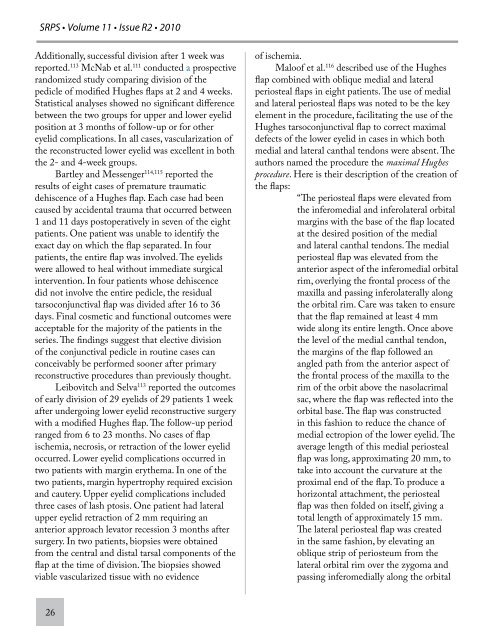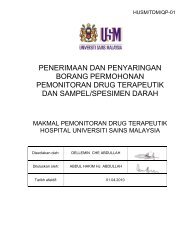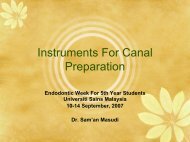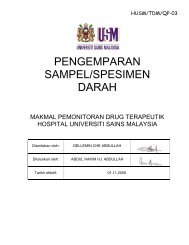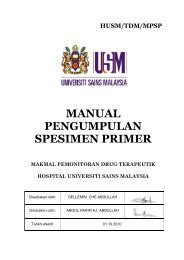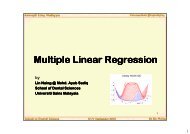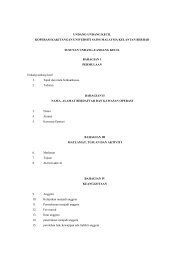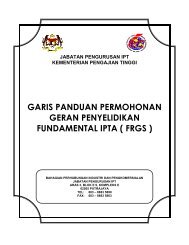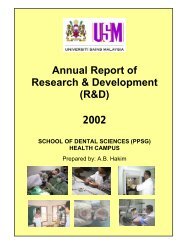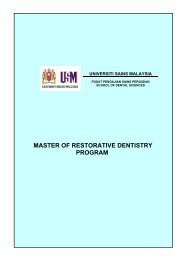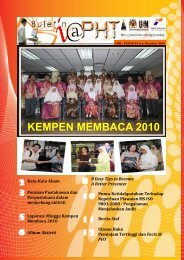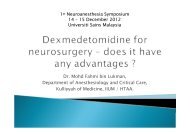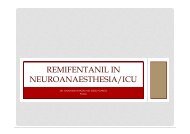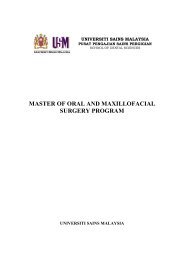Vol 11-R2- Eyelid
Vol 11-R2- Eyelid
Vol 11-R2- Eyelid
You also want an ePaper? Increase the reach of your titles
YUMPU automatically turns print PDFs into web optimized ePapers that Google loves.
SRPS • <strong>Vol</strong>ume <strong>11</strong> • Issue <strong>R2</strong> • 2010<br />
Additionally, successful division after 1 week was<br />
reported. <strong>11</strong>3 McNab et al. <strong>11</strong>1 conducted a prospective<br />
randomized study comparing division of the<br />
pedicle of modified Hughes flaps at 2 and 4 weeks.<br />
Statistical analyses showed no significant difference<br />
between the two groups for upper and lower eyelid<br />
position at 3 months of follow-up or for other<br />
eyelid complications. In all cases, vascularization of<br />
the reconstructed lower eyelid was excellent in both<br />
the 2- and 4-week groups.<br />
Bartley and Messenger <strong>11</strong>4,<strong>11</strong>5 reported the<br />
results of eight cases of premature traumatic<br />
dehiscence of a Hughes flap. Each case had been<br />
caused by accidental trauma that occurred between<br />
1 and <strong>11</strong> days postoperatively in seven of the eight<br />
patients. One patient was unable to identify the<br />
exact day on which the flap separated. In four<br />
patients, the entire flap was involved. The eyelids<br />
were allowed to heal without immediate surgical<br />
intervention. In four patients whose dehiscence<br />
did not involve the entire pedicle, the residual<br />
tarsoconjunctival flap was divided after 16 to 36<br />
days. Final cosmetic and functional outcomes were<br />
acceptable for the majority of the patients in the<br />
series. The findings suggest that elective division<br />
of the conjunctival pedicle in routine cases can<br />
conceivably be performed sooner after primary<br />
reconstructive procedures than previously thought.<br />
Leibovitch and Selva <strong>11</strong>3 reported the outcomes<br />
of early division of 29 eyelids of 29 patients 1 week<br />
after undergoing lower eyelid reconstructive surgery<br />
with a modified Hughes flap. The follow-up period<br />
ranged from 6 to 23 months. No cases of flap<br />
ischemia, necrosis, or retraction of the lower eyelid<br />
occurred. Lower eyelid complications occurred in<br />
two patients with margin erythema. In one of the<br />
two patients, margin hypertrophy required excision<br />
and cautery. Upper eyelid complications included<br />
three cases of lash ptosis. One patient had lateral<br />
upper eyelid retraction of 2 mm requiring an<br />
anterior approach levator recession 3 months after<br />
surgery. In two patients, biopsies were obtained<br />
from the central and distal tarsal components of the<br />
flap at the time of division. The biopsies showed<br />
viable vascularized tissue with no evidence<br />
26<br />
of ischemia.<br />
Maloof et al. <strong>11</strong>6 described use of the Hughes<br />
flap combined with oblique medial and lateral<br />
periosteal flaps in eight patients. The use of medial<br />
and lateral periosteal flaps was noted to be the key<br />
element in the procedure, facilitating the use of the<br />
Hughes tarsoconjunctival flap to correct maximal<br />
defects of the lower eyelid in cases in which both<br />
medial and lateral canthal tendons were absent. The<br />
authors named the procedure the maximal Hughes<br />
procedure. Here is their description of the creation of<br />
the flaps:<br />
“The periosteal flaps were elevated from<br />
the inferomedial and inferolateral orbital<br />
margins with the base of the flap located<br />
at the desired position of the medial<br />
and lateral canthal tendons. The medial<br />
periosteal flap was elevated from the<br />
anterior aspect of the inferomedial orbital<br />
rim, overlying the frontal process of the<br />
maxilla and passing inferolaterally along<br />
the orbital rim. Care was taken to ensure<br />
that the flap remained at least 4 mm<br />
wide along its entire length. Once above<br />
the level of the medial canthal tendon,<br />
the margins of the flap followed an<br />
angled path from the anterior aspect of<br />
the frontal process of the maxilla to the<br />
rim of the orbit above the nasolacrimal<br />
sac, where the flap was reflected into the<br />
orbital base. The flap was constructed<br />
in this fashion to reduce the chance of<br />
medial ectropion of the lower eyelid. The<br />
average length of this medial periosteal<br />
flap was long, approximating 20 mm, to<br />
take into account the curvature at the<br />
proximal end of the flap. To produce a<br />
horizontal attachment, the periosteal<br />
flap was then folded on itself, giving a<br />
total length of approximately 15 mm.<br />
The lateral periosteal flap was created<br />
in the same fashion, by elevating an<br />
oblique strip of periosteum from the<br />
lateral orbital rim over the zygoma and<br />
passing inferomedially along the orbital


